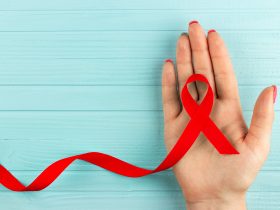Omnisexuality is a sexual orientation that describes attraction to people of all genders, including men, women, nonbinary individuals, and others.
As part of the LGBTQ+ community, omnisexuality encompasses a broad acceptance of diverse gender identities, contributing to the ever-evolving spectrum of sexual orientations and gender expressions. Let’s talk about it and how sexual health is tied to mental health and social aspects.
Defining Omnisexual Attraction
Omnisexual attraction includes romantic, emotional, or sexual attraction to people regardless of their gender identity or biological sex. This means an omnisexual person can be attracted to individuals who are male, female, nonbinary, genderqueer, gender fluid, or of any other gender expression.
However, it is essential to note that omnisexual individuals, like everyone else, have personal preferences and may feel more comfortable dating people of particular genders or gender expressions.
Common Myths and Misconceptions
Despite growing awareness, several myths about omnisexuality persist, leading to misunderstanding and discrimination. Here are some common misconceptions:
- Promiscuity: There is no evidence to suggest that omnisexual people are more promiscuous than others. They have the same capacity for commitment and monogamous relationships as people of any other sexual orientation.
- Confusion: Omnisexual individuals are not confused about their sexuality; they know who they are and who they are attracted to.
- A New Trend: Omnisexuality is not a new phenomenon. It has always existed but has become more visible and accepted recently, partly due to the rise of the Internet and social media.
- Attraction to Everyone: Being omnisexual does not mean attraction to everyone. While they are open to all genders, omnisexual individuals still have preferences and standards for romantic or sexual connections.
Omnisexuality vs. Pansexuality
Both omnisexuality and pansexuality involve attraction to people of all genders, but they differ in their approach and perspective on gender.
Understanding these nuances helps in appreciating the diversity of human sexual orientation and the personal experiences of those who identify with these terms.
Omnisexuality refers to an attraction to people of all genders with an explicit awareness and acknowledgment of gender differences. This means that an omnisexual person is attracted to individuals across the entire gender spectrum.
Omnisexual individuals recognize and appreciate the gender of the person they are attracted to, without letting it restrict their attraction. This does not mean they discriminate based on gender; rather, they are aware of and responsive to it.
Pansexuality, on the other hand, is defined by an attraction to people regardless of their gender. Often described as being “gender-blind,” pansexual individuals do not consider gender as a significant factor in their attraction.
Omnisexuality vs. Bisexuality
While omnisexuality and bisexuality both involve attraction to multiple genders, they are distinct orientations with nuanced differences. Understanding these differences is important for recognizing and respecting the diverse experiences of individuals within the LGBTQ+ community.
The primary difference between omnisexuality and bisexuality lies in the scope of gender attraction:
- Bisexuality: Attraction to more than one gender, but not necessarily all genders. Bisexual individuals may have preferences or varying levels of attraction to different genders.
- Omnisexuality: Attraction to all genders, with an explicit acknowledgment of and openness to the full spectrum of gender identities.
While these definitions highlight the differences, there is often overlap in the experiences of bisexual and omnisexual individuals. Both orientations can encompass a wide range of attractions and do not prescribe rigid boundaries for whom one can be attracted to.
Additionally, people identifying as bisexual or omnisexual may share common experiences of navigating societal perceptions, stereotypes, and the complexities of attraction beyond the traditional gender binary.
For many individuals, the distinction between bisexuality and omnisexuality is also about inclusivity and identity politics. Some people might prefer the term “omnisexual” to emphasize their attraction to all genders, making a deliberate statement about inclusivity and the recognition of diverse gender identities.
Others may identify as bisexual to connect with the broader historical and cultural community of bisexuality, which has its own rich history and social movement.
Discussing Omnisexuality in Relationships
Conversations about omnisexuality can be meaningful and foster understanding and support in relationships.
Here are some tips for discussing omnisexuality:
- Educate Yourself: Knowing more about omnisexuality helps in explaining it to others.
- Choose the Right Time and Place: Ensure a comfortable and safe environment for these discussions.
- Emphasize Personal Experience: Sharing personal experiences can make omnisexuality more relatable.
- Set Boundaries: Communicate your expectations regarding respect and acceptance.
- Encourage Questions: Be open to answering questions honestly and patiently.
- Be Patient: Allow others time to process the information.
- Seek Support: Look for support groups or organizations that can provide guidance and support.
It’s important to remember that discussing one’s sexual orientation is a personal choice. No one is obligated to disclose their sexuality unless they feel comfortable doing so.
The Omnisexual Flag
The omnisexual flag symbolizes pride and visibility for omnisexual people. Created in 2015, the flag has five horizontal stripes with the following colors and meanings:
- Light pink and light blue: Represent the gender spectrum.
- Dark pink: Represents attraction to women and femininity.
- Dark blue: Represents attraction to men and masculinity.
- Purple: Represents attraction to people of all other genders, including nonbinary and genderfluid individuals.
Finding Support
For those who identify as omnisexual, finding understanding and support is crucial. Support networks can provide a sense of belonging and acceptance, and numerous resources are available:
- Online forums: Platforms like Empty Closets, Q Chat Space, or TrevorSpace.
- In-person support: Local LGBTQ+ community centers.
- LGBTQ-focused organizations: The Trevor Project, Out & Equal, GLAAD, and the Human Rights Campaign.
Conclusion
Omnisexuality is a valid and legitimate sexual orientation encompassing attraction to people of all genders. Each omnisexual person’s experiences and preferences are unique, reflecting the rich diversity within the LGBTQ+ community.
Whether identifying as omnisexual or questioning one’s sexuality, having a strong support system can help navigate these experiences and foster acceptance and understanding.
















Find Us on Socials